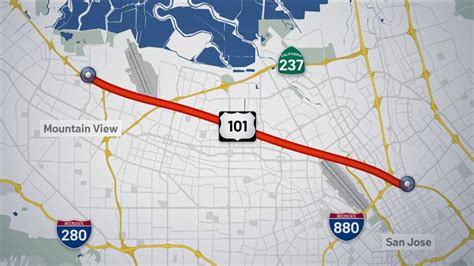The stretch of Highway 101 that winds its way through the picturesque landscapes of California, Oregon, and Washington is a route beloved by many, whether for its scenic beauty, the convenience it offers for commuters, or the plethora of attractions it connects. However, like any major highway, it’s not immune to closures, which can be due to a variety of reasons including construction, accidents, weather conditions, and maintenance. Planning around these closures is crucial to avoid unnecessary delays and ensure a smooth journey. Here’s a look at 10 potential Highway 101 closures that travelers should be aware of, along with strategies for navigating around them and what these scenarios might look like in real-time.
1. Mudslide Areas in Del Norte and Humboldt Counties, California
- Nature of Closure: Periodic closures due to mudslides, especially during rainy seasons.
- Planning Around It: Check the latest road conditions before embarking on your journey. Consider alternative routes like US-199 for parts of your trip, though this might add to your overall travel time.
2. Bridge Maintenance in Oregon
- Nature of Closure: Scheduled maintenance of bridges along the Oregon stretch of Highway 101.
- Planning Around It: Look for advance notices from the Oregon Department of Transportation. Sometimes, closures are limited to nighttime hours, so adjusting your travel schedule can help minimize delays.
3. Construction Zones in Tillamook County, Oregon
- Nature of Closure: Lane closures or full highway closures for construction and improvement projects.
- Planning Around It: Utilize real-time traffic updates to identify current construction zones. Leaving early or taking breaks during less busy hours can mitigate the impact of these closures.
4. Wildfire Risk Areas
- Nature of Closure: Precautionary closures during high wildfire risk seasons, particularly in areas prone to such disasters.
- Planning Around It: Stay informed about fire risk levels and any evacuation orders. While not always a direct closure of the highway, nearby wildfires can impact air quality and visibility, affecting travel plans.
5. Flooding Near Coastal Areas
- Nature of Closure: Temporary closures due to flooding, especially in low-lying coastal sections during heavy storms.
- Planning Around It: Monitor weather forecasts closely and consider delaying travel during periods of heavy rain. Alternative inland routes, though longer, can provide a safer passage.
6. Accident Investigation Zones
- Nature of Closure: Unexpected closures following accidents that require thorough investigation.
- Planning Around It: Keep an eye on traffic updates and consider downloading apps that provide real-time traffic information. Sometimes, taking a short detour can save time in the long run.
7. Road Resurfacing Projects
- Nature of Closure: Planned closures for road resurfacing to improve road conditions.
- Planning Around It: Look out for scheduled maintenance announcements from local transportation departments. These projects are often conducted at night, so planning your travel for daytime hours can help avoid delays.
8. Special Events and Parades
- Nature of Closure: Temporary closures to accommodate local events, parades, or festivals.
- Planning Around It: Check local event calendars before your trip. While these closures are usually well-publicized, they can still catch travelers off guard. Leaving some buffer time in your travel schedule can help accommodate unexpected stops.
9. Rockfall and Landslide Zones
- Nature of Closure: Closures due to rockfall or landslide risks, particularly in mountainous or coastal areas.
- Planning Around It: Be aware of geological hazard zones along your route. Staying updated with the latest geological surveys and road condition reports can help anticipate and plan around such closures.
10. Planned Inspections and Repairs
- Nature of Closure: Scheduled inspections and subsequent repairs of infrastructure like bridges and tunnels.
- Planning Around It: Keep an eye on official transportation department announcements. These closures are often scheduled well in advance, allowing travelers to adjust their itineraries accordingly.
Strategies for Navigating Closures
- Stay Informed: Utilize official transportation department websites, social media, and traffic apps to get the latest information on road conditions and closures.
- Flexibility: Be prepared to adjust your travel plans, including your route and timing, based on current conditions.
- Alternative Routes: Familiarize yourself with potential detours and alternative routes that can help you bypass closed sections of the highway.
- Real-Time Updates: Keep your phone charged and use it to get real-time traffic updates. Many GPS systems and apps can also reroute you around traffic incidents and road closures.
Conclusion
Highway 101, with its stunning vistas and critical connectivity, is a vital route for both locals and tourists. While closures can be inconvenient, being prepared and flexible can significantly reduce their impact on your journey. By understanding the nature of potential closures, staying updated with the latest information, and being open to adjustments in your travel plans, you can navigate the challenges posed by Highway 101 closures and enjoy a smoother, more enjoyable trip.
How can I stay updated about real-time road conditions on Highway 101?
+To stay updated, you can use apps like Waze or Google Maps, which provide real-time traffic information, including road closures and construction zones. Additionally, following the social media accounts of local transportation departments can offer timely updates and advisories.
What are the best alternative routes when Highway 101 is closed in Oregon?
+When Highway 101 is closed in Oregon, one of the primary alternative routes is using US-20 or US-26, depending on your starting and ending points. For instance, if you’re traveling from the north, US-101 to US-20 can be a viable detour. Always check for the most current information, as alternative routes may also be affected by construction or weather conditions.
How do I plan my trip to avoid construction zones on Highway 101?
+Planning your trip to avoid construction zones involves checking the official website of the relevant state’s Department of Transportation for scheduled maintenance and construction projects. You can also use mapping services to identify current and planned construction areas and adjust your route accordingly. Leaving some flexibility in your travel schedule can also help in case you need to take a detour.


